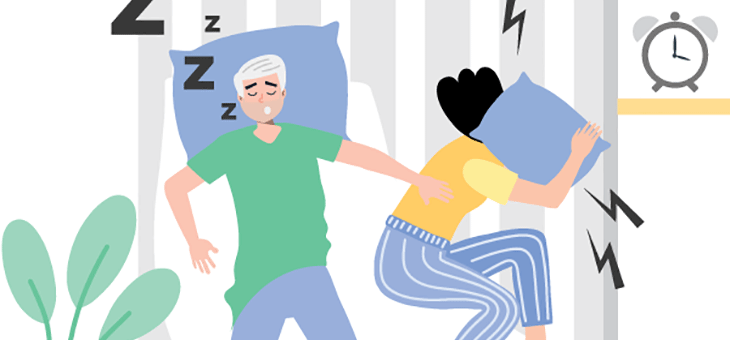Sleep apnoea is a breathing disorder that interferes with your ability to sleep.
A brief interruption to sleep (an arousal) that lasts for as little as three seconds then occurs, allowing breathing to start again but your sleep is disrupted as a result.
These episodes of obstruction may happen many times – even hundreds of times – overnight.
Some people know their breathing is not normal at night, but they may be unaware that it is a medical problem that is causing them harm.
And you’re not the only one you’re hurting.
It most likely interferes with your partner’s sleep, too.
Sleep apnoea is a potentially dangerous condition, with far reaching consequences.
It not only results in poor sleep – which we all know contributes to further health problems. It can also increase your risk of accidents, be they behind the wheel of your car, at home, or at the workplace and can raise your blood pressure, increasing your risk of heart attack or stroke.
There are many causes of sleep apnoea, some of which you may be able to control or avoid but many of which are out of your hands.
If any of these symptoms or risk factors apply to you, it might be time to take a sleep apnoea test.
Now, many of you may think that requires a visit to a sleep specialist or being linked up to electrodes that monitor your sleep patterns.
But there’s a simple test you can take to find out if you’re a sleep apnoea candidate. It’s called the STOPBANG test. Why?
S – Snoring
Sleep apneoa sufferers don’t always snore, but snoring is a good indicator and patients should seek advice.
T – Tired
Sufferers often waken feeling fatigued and sleepy. They may also fall asleep during the day, maybe when driving or talking to others.
O – Observed
Quite often the partners of a sufferer may observe the patient stopping breathing or spluttering while they are asleep.
P – Pressure
Hypertension or elevated blood pressure can be caused by sleep apnoea. Your cardiologist may need to be consulted.
B – Body
People with a body mass index (BMI) of over 35Kg/m2 are at higher risk of developing sleep apnoea.
A – Age
The risks of developing sleep apnoea increase after age 50.
N – Neck
People with a large neck circumference of over 40cm are at a higher risk of developing sleep apnoea.
G – Gender
Men are at a significantly higher risk of developing sleep apnoea, although after age 70, the gender factor is less significant.
The Epworth Sleepiness Scale test is also a simple way to find out if you need to take further action.
It’s used to measure daytime sleepiness and is a screening test in the form of a short questionnaire that asks you about your night-time activities, situations and the that lead to the probability – or improbability – of falling asleep.
It only takes a couple of minutes to do the test. Why not take it and see if it helps you live well and sleep better?

